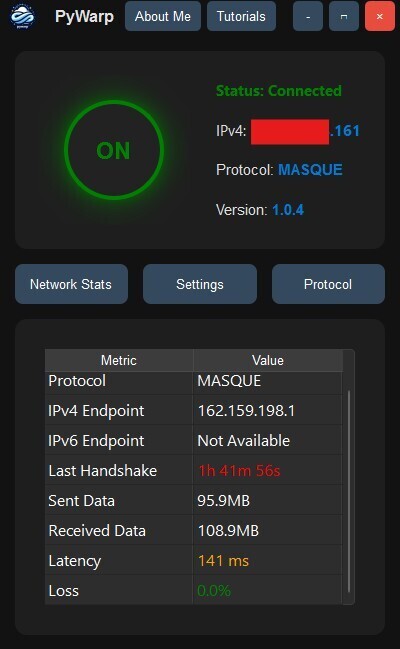How to Use Passive DNS To Trace Hackers Command And Control Infrastructure
Passive DNS has emerged as a critical tool for cybersecurity professionals seeking to identify and track malicious command and control (C2) infrastructure. By creating a historical record of DNS activities, security teams can follow the digital breadcrumbs left by threat actors while maintaining operational stealth. This capability is particularly valuable when investigating sophisticated threats that […] The post How to Use Passive DNS To Trace Hackers Command And Control Infrastructure appeared first on Cyber Security News.

Passive DNS has emerged as a critical tool for cybersecurity professionals seeking to identify and track malicious command and control (C2) infrastructure.
By creating a historical record of DNS activities, security teams can follow the digital breadcrumbs left by threat actors while maintaining operational stealth.
This capability is particularly valuable when investigating sophisticated threats that leverage dynamic DNS techniques to evade detection.
Understanding Passive DNS Technology
Passive DNS represents a fundamental shift in how we analyze domain name system data.
Unlike traditional DNS lookups that merely resolve domain names to IP addresses in real-time, passive DNS captures, stores, and indexes historical DNS resolution data.
This technology works through a network of sensors that monitor DNS query-response pairs, forwarding this information to central collection points for analysis without disrupting normal network operations.
The resulting historical databases contain billions of unique records that security analysts can query to understand how domain names have resolved over time. These records typically include crucial information such as:
- The domain name being queried
- The record type (A, AAAA, MX, CNAME, etc.)
- The IP address or value returned
- Timestamps showing when the resolution was first and last observed
- Name server information
This historical perspective provides invaluable context that active DNS lookups simply cannot offer.
When investigating potential threats, analysts can review months or even years of DNS resolution data without alerting adversaries to their investigation—a critical advantage when dealing with sophisticated threat actors.
Tracing Command And Control Infrastructure
Command and control infrastructure forms the backbone of most sophisticated cyber attacks, providing attackers with the means to communicate with compromised systems, issue commands, and exfiltrate data.
Threat actors frequently leverage DNS to maintain flexible and resilient C2 operations, making passive DNS an essential component of modern threat hunting.
Modern attackers employ increasingly sophisticated techniques to obscure their activities, including Fast Flux networks and Domain Generating Algorithms (DGAs) that constantly change their infrastructure.
Additionally, they often deploy malware through multiple IP addresses simultaneously to avoid detection by traditional security tools.
These evasion tactics create significant challenges for security teams relying solely on real-time detection methods.
Passive DNS addresses these challenges by enabling analysts to track infrastructure changes over time and identify patterns that would otherwise remain hidden.
When a security team discovers a suspicious domain or IP address, passive DNS allows them to trace its historical connections and uncover the broader infrastructure used by the threat actor.
Pivoting Techniques In Passive DNS Analysis
The true power of passive DNS in C2 investigation comes through various pivoting techniques that allow analysts to expand from a single indicator to map entire attack infrastructures.
These techniques leverage the interconnected nature of DNS to reveal relationships between seemingly disparate domains and IP addresses.
IP-based pivoting represents one of the most effective approaches. Starting with a known malicious IP address, analysts can query passive DNS to identify all domains that have historically resolved to that address.
This technique often reveals additional malicious domains that share infrastructure but might otherwise appear unrelated.
For example, when investigating ransomware C2 communications, security teams can identify multiple domains used by the same threat actor by examining shared IP infrastructure.
Similarly, domain-based pivoting allows investigators to start with a suspicious domain and trace its historical IP resolutions, which may lead to other domains using the same infrastructure.
For instance, when analyzing the domain “cloridatosys[.]com” (associated with a banking trojan), researchers used passive DNS to identify its association with a specific IP address and subsequently discovered other domains in the same campaign.
Practical Applications In Security Operations
Security teams across various industries have integrated passive DNS into their daily operations, transforming their ability to detect and respond to threats.
From proactive threat hunting to incident response, passive DNS provides critical context that enhances multiple security functions.
For threat hunters, passive DNS offers the ability to proactively search for suspicious patterns without alerting potential adversaries.
By querying for domains that exhibit characteristics similar to known threats or that resolve to suspicious geographic regions, security teams can identify potential C2 infrastructure before it’s used in attacks against their organization.
During incident response, passive DNS becomes even more valuable. When suspicious network traffic is detected, analysts can quickly contextualize IP addresses by determining what domains have historically resolved to them.
This information often reveals the true nature of the traffic and exposes the full scope of the compromise.
Building Effective Detection Strategies
To maximize the value of passive DNS for C2 infrastructure detection, organizations should develop structured approaches that leverage its unique capabilities while addressing its limitations.
First, security teams should integrate passive DNS data into their threat intelligence platforms, allowing for automated correlation between observed network activity and historical DNS patterns.
This integration enables rapid identification of potential C2 communication without requiring manual analysis for every suspicious connection.
Second, organizations should establish processes for regular passive DNS monitoring of their own domains and IP ranges.
This monitoring helps identify unauthorized infrastructure changes that might indicate compromise, such as unexpected subdomain creations or unusual DNS record modifications.
Finally, security teams should combine passive DNS intelligence with other data sources like WHOIS information and SSL certificate details to build comprehensive views of potential threat infrastructure.
This multi-faceted approach creates a more complete picture of adversary tactics and improves detection accuracy.
By implementing these strategies, organizations can significantly enhance their ability to detect and disrupt command and control infrastructure before it can be effectively leveraged against them.
Passive DNS has become an indispensable tool for security professionals seeking to understand and counter sophisticated threats.
Its ability to reveal historical connections between domains and IP addresses provides critical context that makes tracking command and control infrastructure possible even as attackers employ increasingly sophisticated evasion techniques.
Find this News Interesting! Follow us on Google News, LinkedIn, & X to Get Instant Updates!
The post How to Use Passive DNS To Trace Hackers Command And Control Infrastructure appeared first on Cyber Security News.



































































![Apple Watch Series 10 Back On Sale for $299! [Lowest Price Ever]](https://www.iclarified.com/images/news/96657/96657/96657-640.jpg)
![Apple Slips to Fifth in China's Smartphone Market with 9% Decline [Report]](https://www.iclarified.com/images/news/97065/97065/97065-640.jpg)
![EU Postpones Apple App Store Fines Amid Tariff Negotiations [Report]](https://www.iclarified.com/images/news/97068/97068/97068-640.jpg)














![What’s new in Android’s April 2025 Google System Updates [U: 4/18]](https://i0.wp.com/9to5google.com/wp-content/uploads/sites/4/2025/01/google-play-services-3.jpg?resize=1200%2C628&quality=82&strip=all&ssl=1)



























































































_Andreas_Prott_Alamy.jpg?width=1280&auto=webp&quality=80&disable=upscale#)





















































































![[The AI Show Episode 144]: ChatGPT’s New Memory, Shopify CEO’s Leaked “AI First” Memo, Google Cloud Next Releases, o3 and o4-mini Coming Soon & Llama 4’s Rocky Launch](https://www.marketingaiinstitute.com/hubfs/ep%20144%20cover.png)












































































































































![[FREE EBOOKS] Machine Learning Hero, AI-Assisted Programming for Web and Machine Learning & Four More Best Selling Titles](https://www.javacodegeeks.com/wp-content/uploads/2012/12/jcg-logo.jpg)






























































































